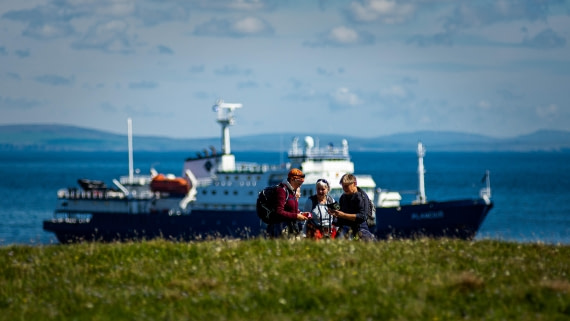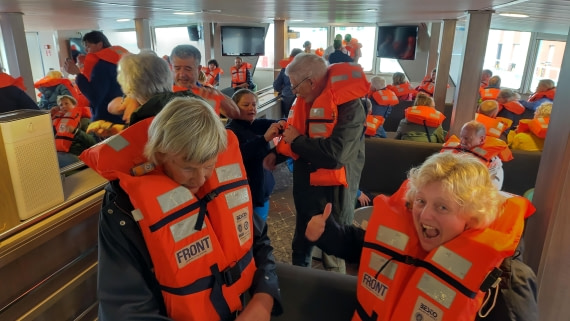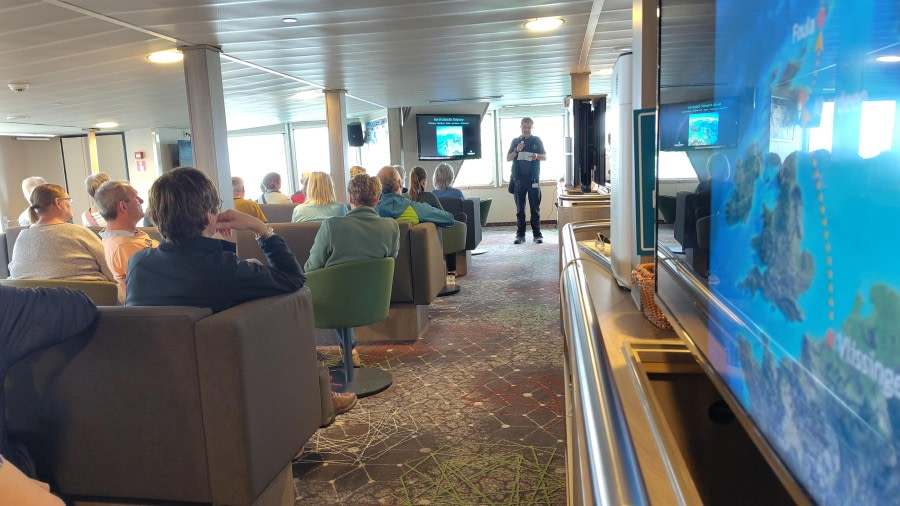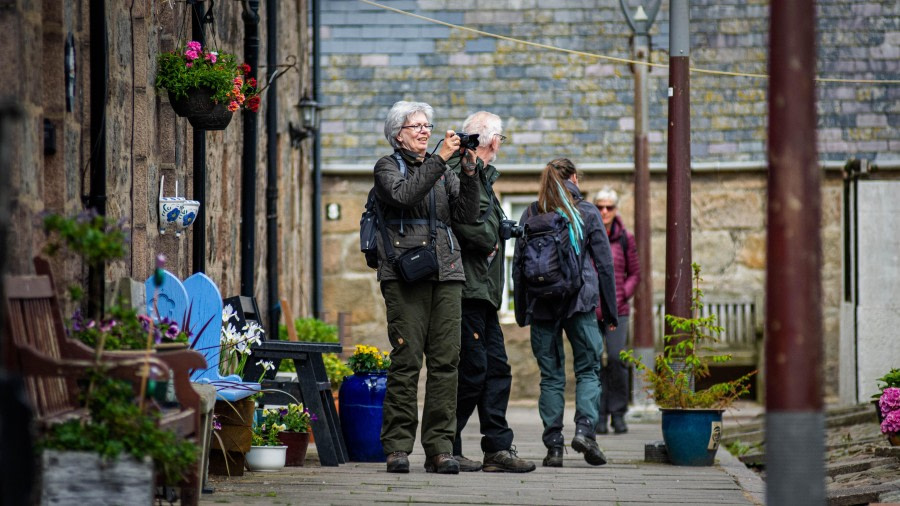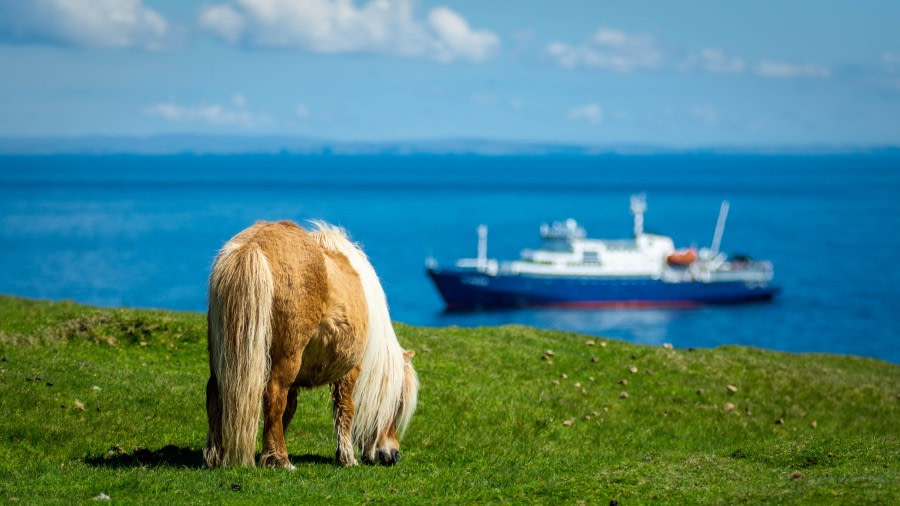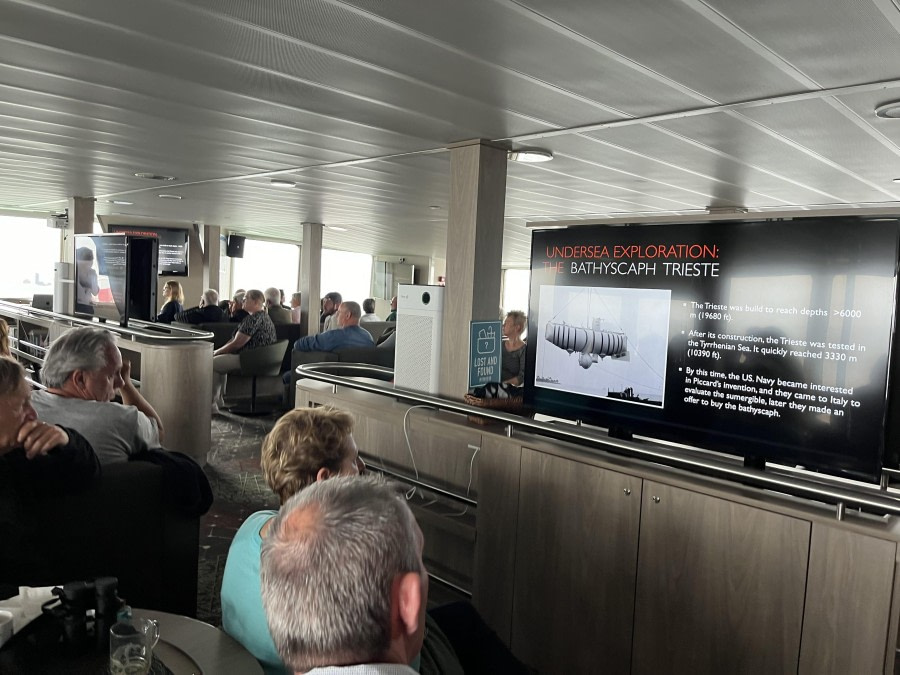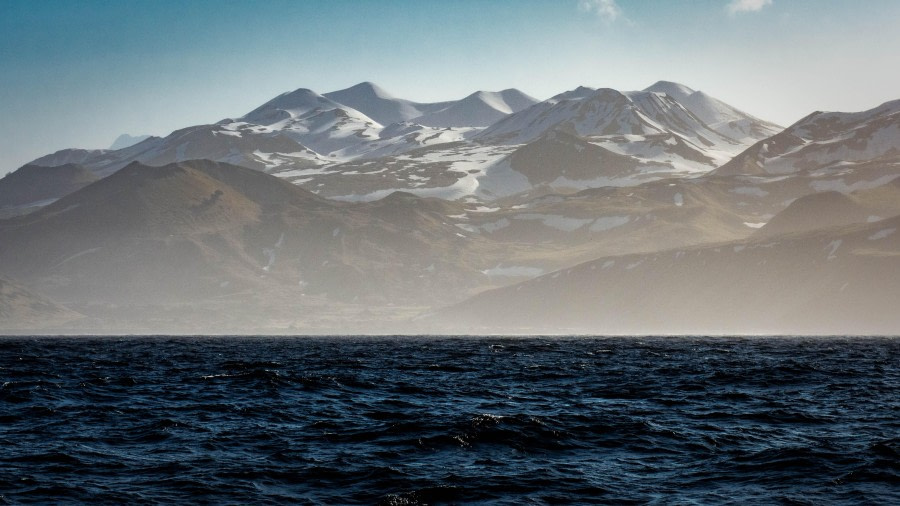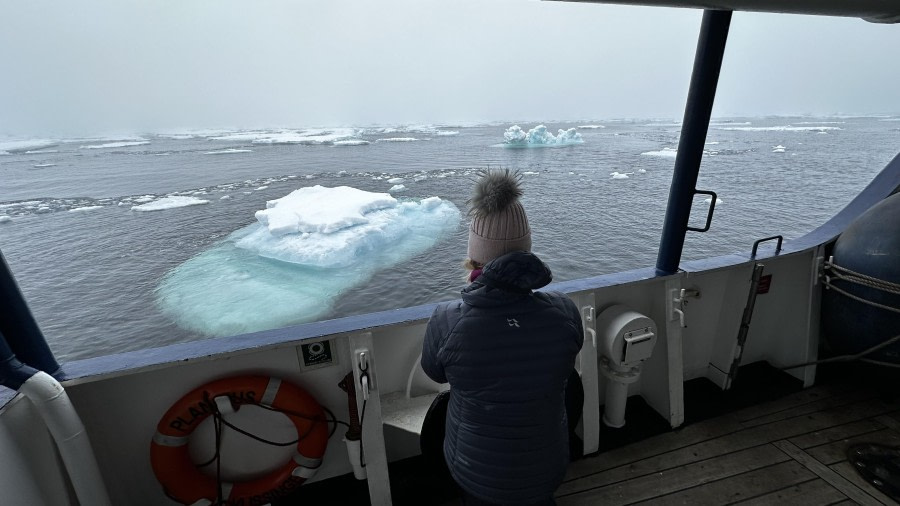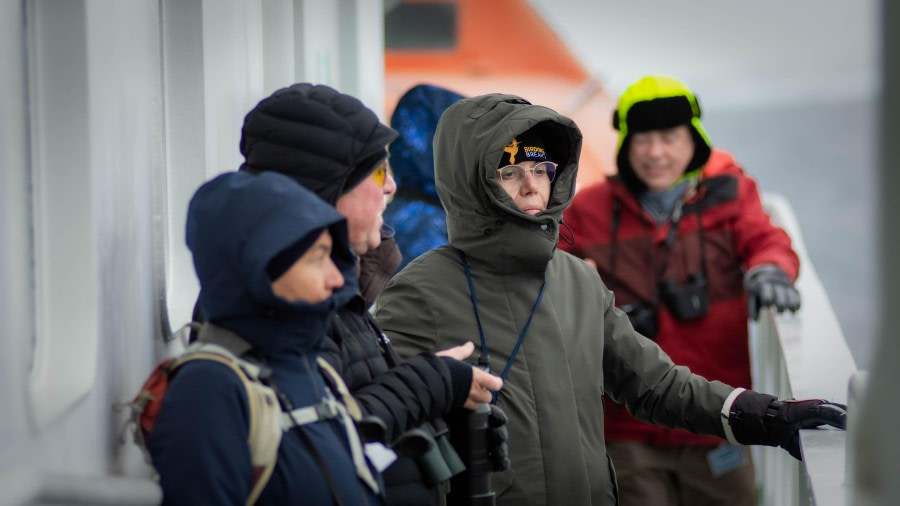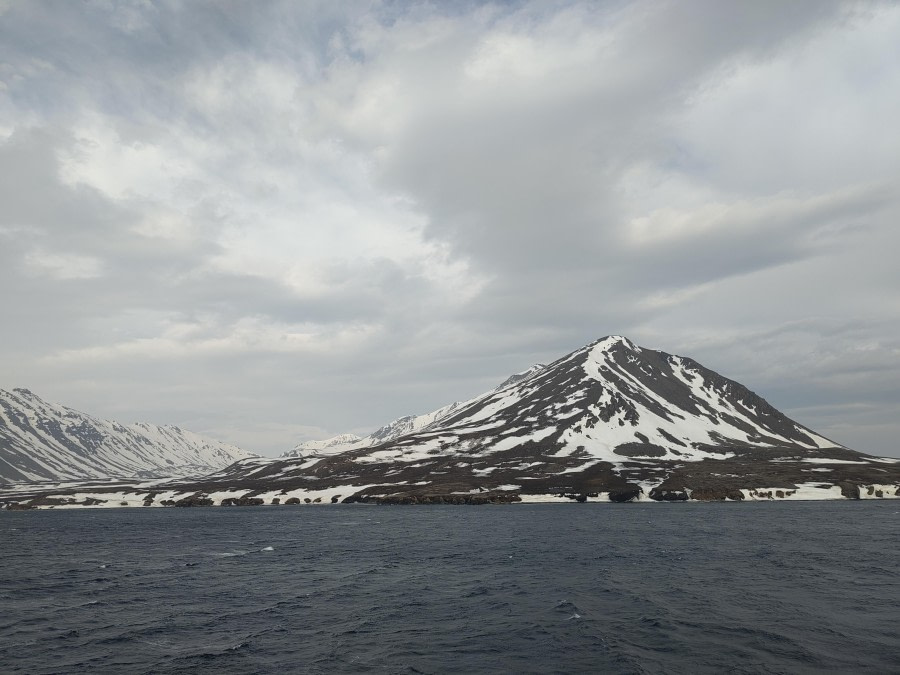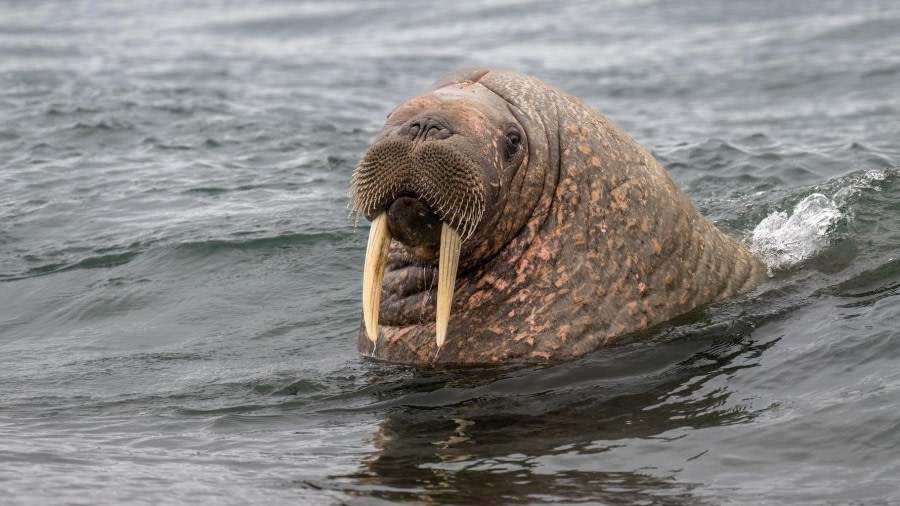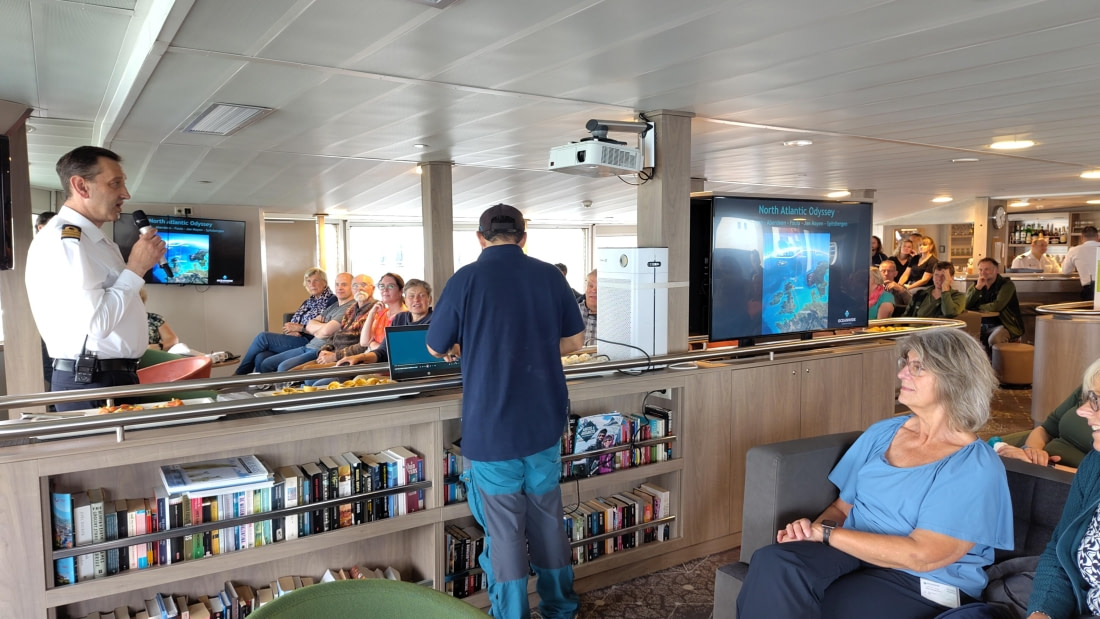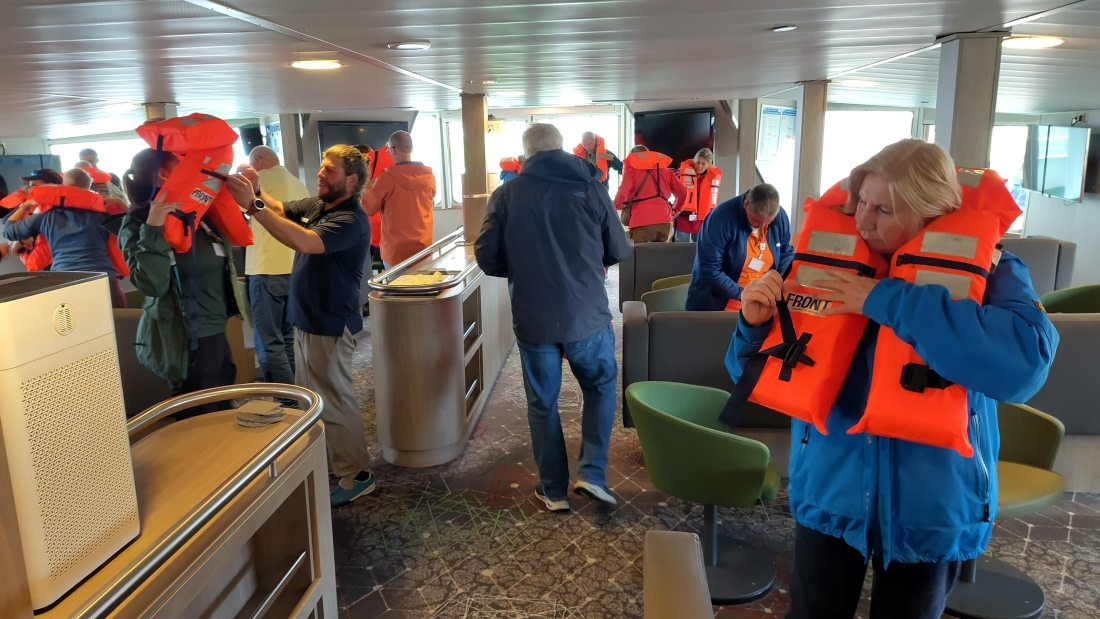| Fecha: |
28.05.2024 |
| Posición: |
57°08.6’N / 002°05.1’W |
| Viento: |
WSW2 |
| Clima: |
Partly cloudy |
| Temperatura del Aire: |
+13 |
As soon as we woke up, we all felt a sharp desire to wear a kilt and play the bagpipes. What happened, you might ask? The answer is simple – Plancius, our ship, was approaching the shores of Scotland. Through the binoculars, we could already see the green fields, where various grains and other plants grew, pastures with shaggy, funny-looking cows grazing on them, and small villages scattered along the coastline and inland. Directly ahead of us was the large city of Aberdeen. Just north of the city, enormous wind turbines rose straight out of the sea. Their blades slowly rotated in the wind, allowing the generators to produce electricity. The sight was mesmerizing but, admittedly, somewhat eerie.
Plancius approached the harbour and slowed down. A few bottle-nosed dolphins, which had taken to escorting our ship and probably hoped to do some bow riding, swam away disappointed and confused. Soon, while manoeuvring through the port area, Plancius turned stern-first and slowly backed up further. The dolphins, seeing this scene, were completely bewildered, and decided that something was definitely wrong with this ship, swam away to frolic in the waves and wait for another vessel.
Meanwhile, Plancius was securely moored next to one of the quay walls, and as soon as the gangway was lowered, strict border guards promptly climbed aboard. The expedition team politely greeted them and escorted them to the main lounge on deck 5. We lined up in a long queue and one by one, passport in hand, visited the border guards to ensure there were no spies or wrongdoers among us. Once the border control procedure was completed, we descended the gangway to the pier, where buses were already waiting for us.
The weather was simply wonderful – warm and sunny – and an exciting, adventure-filled day awaited us.
We boarded the buses and sped through the narrow streets of Aberdeen, and after leaving the city, we zoomed down the highway towards Sands of Forvie, an incredibly interesting natural site. Many of us were not used to seeing a bus drive on the left side of the road, and the steering wheel of our vehicle was on the "wrong" side, but seeing the unflappable confidence with which the driver did his job, we quickly calmed down and began to look out the windows, admiring the Scottish pastoral scenes.
What are Sands of Forvie? It is a picturesque spot on the ocean shore, representing the estuary of the River Forvie, surrounded by grass and shrub-covered sand dunes. But the most interesting thing about Sands of Forvie is not even its natural beauty, but the animal inhabitants that have chosen the riverbanks as their home. These include primarily eider ducks and some other birds, and also seals! Sometimes, they say, up to three thousand of them can gather there.
The buses parked at a lot near a small hotel with a restaurant, and we walked along a narrow asphalt path towards the sea. Soon, the asphalt turned into a wooden boardwalk, and eventually, we had to walk on sand. Around us, bushes with bright yellow flowers were growing densely. There were so many flowers that it seemed like some kind of carpet.
Soon, we reached the estuary of the River Forvie. The tide was out, and the ocean had retreated, exposing algae-covered rocks, mud, and tightly packed sand. There were no seals on the shore, but there were plenty of ducks! Those of us who were into birdwatching set up their tripods with spotting scopes and began observing the feathered horde, while the rest of us strolled along the shore. The River Forvie isn’t wide: if you took a stone and threw it with a good swing, you could reach the opposite bank. (But don’t do that, remember there are many birds!) From time to time, strange-shaped heads with disproportionately large nostrils could be seen surfacing in the middle of the river – these were grey seals. They snorted and eagerly and curiously sniffed the air filled with unfamiliar scents.
The time allotted for our walk flew by surprisingly quickly, and soon it was time to return to the buses and head to the next natural attraction, called Bullers of Buchan, whatever that meant. Another bus ride, another road, more pastoral scenes, and after half an hour, we arrived at a car park, where, after getting off the buses, we found a sign with an arrow saying "Bullers of Buchan." After walking a couple of hundred meters and passing several charming Scottish houses with front gardens, we found ourselves on a high and steep seaside cliff. The cliffs were exceptionally picturesque, but the most important thing was the sheer number of birds: black-legged kittiwakes, guillemots, Northern fulmars, razorbills, and others. Our ornithologists, glowing with enthusiasm, began walking along the edge of these steep cliffs, stopping from time to time to set up their tripods with spotting scopes, adjusting the eyepieces, and occasionally taking a break from their observations to take a few shots with their cameras. Those who were not interested in birds simply enjoyed the natural beauty, fresh air, and good weather. It was already two o’clock in the afternoon, so many of us, finding a suitable spot, settled down for lunch, pulling out sandwich packs from our backpacks, which we had prepared earlier in the morning during breakfast. Delicious!
Before we knew it, it was time to return to Aberdeen. With a sense of satisfaction from a day well spent and filled with impressions of the local natural beauty, we returned to the buses and took our seats. The road back to Aberdeen didn’t take much time. Along the way, we even managed to stop by a supermarket and spent half an hour shopping. To tell you the truth, the main purpose of visiting the supermarket was to withdraw cash from the ATM located there, but alas, the ATM was out of order, so everyone faced a major disappointment. However, against the backdrop of all the day's events, this failure seemed like a triviality, and no one was upset.
Aberdeen greeted us with warm but no longer cloudless weather. Before returning to the ship, we made one more stop in a village called Foot Dee or Fittie. The village, located near the harbour, has long since become part of the city, but it retained its fairy-tale charm and uniqueness. Walking through it, it felt like stepping into the pages of Charles Dickens' novels. Narrow streets, front gardens, benches, cats, knick-knacks in the windows, and laundry hanging on lines. Even the hearts of the most hopeless sceptics of man-made attractions melted and were touched. Truly, the village of Fittie was the cherry on top and a fitting conclusion to this wonderful day.
As soon as we returned to the ship, Plancius was unmoored, after which it set course northward – to the island of Foula. The dolphins, apparently deciding to make amends and apologize for their morning behaviour, escorted our ship into the sunset, bustling around and waving us with their dorsal fins.

